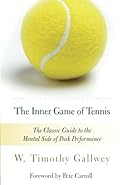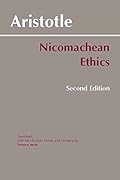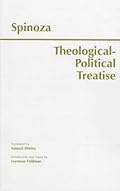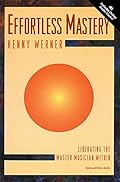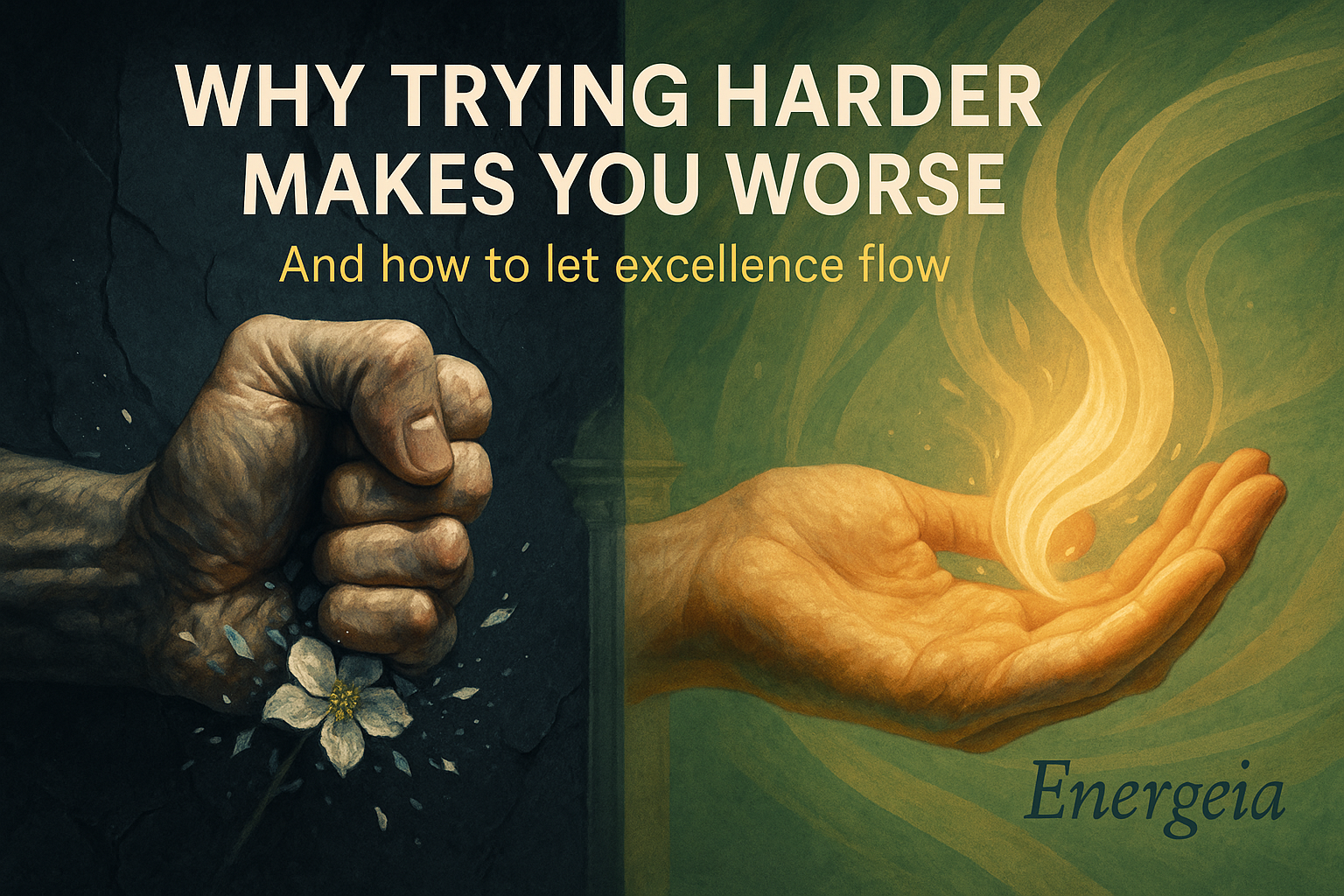
Why Trying Harder Makes You Worse (And How to Let Excellence Flow)
By Derek Neighbors on October 1, 2025
Ancient Wisdom Flow States
Ancient wisdom meets modern neuroscience in understanding peak performance states
Last week I spent four hours on a strategy document that should have taken ninety minutes. The whole time, my shoulders were up by my ears, my jaw clenched, my hands gripping the keyboard like I was trying to strangle answers out of it.
I was “focused.” I was “disciplined.” I had built all the conditions: constraints set, environment clean, boundary defended. I had applied the attention training: phone gone, notifications off, prosoche drills completed.
But the work felt like pushing a boulder uphill through mud.
At hour three, my wife walked in to ask a simple question. I snapped at her. Not because she interrupted something important, but because maintaining that level of forced concentration felt like balancing on a knife edge, and any disturbance threatened to collapse the whole thing.
The next day I had to revise the document. I sat down with different energy. Still protected my boundary, still set my constraints, but I released the grip. I stopped trying to force excellence and just engaged with the work.
Ninety minutes. Better quality. Stood up energized instead of depleted.
Same conditions. Same attention training. Completely different relationship with effort.
That’s when I understood what Aristotle meant by energeia.
The Apparent Contradiction
Here’s the paradox that breaks most high performers:
You’ve done everything right. You built the conditions: clean environment, clear constraints, closed loops. You trained your attention: prosoche capacity developed, wandering mind caught and returned, deep work blocks honored.
But when you sit down to actually do the work, it still feels like EFFORT. Capital letters, grinding, exhausting effort.
So what do you do? You try harder. More concentration. More willpower. More force.
And the work gets worse.
The athlete chokes when they “try too hard” in the championship. The writer stares at a blank page, forcing words that won’t come. The leader over-controls and kills team performance. The musician loses the music when they focus too hard on technique.
This makes no sense. How can trying hard be the problem when you just spent two articles learning that discipline is the foundation? How can “letting go” create better results when focus is essential?
It seems contradictory. But it’s not. It’s sequential.
You needed maximum effort to build capacity. Now you need minimum effort to access what you built.
The Deeper Truth
The Greeks understood something we keep forgetting: excellence has phases, and each phase requires a different relationship with effort.
Aristotle distinguished between two fundamentally different types of activity:
Kinesis is movement toward an external goal. Building a house. Training a skill. Creating conditions for flow. It has an endpoint. It’s incomplete until you reach that goal. Effort is visible and measurable. Once you complete it, you stop.
Energeia is activity complete in every moment. Seeing. Thinking. Living well. There’s no external endpoint because the activity itself is the point. Effort disappears into the action. It’s never “finished” because it’s not going anywhere, it just IS.
Here’s what this means for your work:
Phase 1: Building Capacity (Kinesis Territory)
This IS about effort. Forcing yourself to show up when you don’t feel like it. Defending boundaries when people want your attention. Returning wandering focus again and again until prosoche becomes trained.
Building conditions takes willpower. Training attention requires forced returns. This phase is exhausting, intentional, effortful. You’re moving toward a goal: the capacity to access deep work and flow states.
Discipline, constraint, boundary defense, that’s all kinesis. Necessary kinesis. Don’t skip it.
Phase 2: Accessing Flow (Energeia Territory)
This is NOT about effort. This is about release.
Once conditions are built and attention is trained, forcing actually blocks the state you built capacity to access. The grip you needed to establish discipline now prevents excellence from emerging.
Energeia is what happens when you stop trying to make it happen and start allowing it to unfold.
Aristotle wrote
For it is not the same to be walking and to have walked, nor to be building and to have built. But it is the same to be seeing and to have seen.
When you’re in energeia, the present action is complete in itself. You’re not “trying to write” (kinesis). You’re writing (energeia). You’re not “working toward flow.” You’re flowing.
Why Forcing Kills Flow
Your brain has a prefrontal cortex that handles executive control—planning, monitoring, evaluating, forcing. When you’re “trying hard,” you’re keeping the prefrontal cortex active. Maximum conscious control.
But flow states require prefrontal deactivation. Reduced self-monitoring. Less conscious control, more automatic competence.
When you try too hard, you block the very state you’re trying to access.
It’s like trying to fall asleep by forcing yourself to sleep. The effort prevents the state.
Or holding a bird: grip too tight and you kill it. Too loose and it flies away. The mastery is in learning the light grip that allows the bird to rest in your palm.
Most people never learn this. They white-knuckle their way through deep work, exhausting themselves and producing mediocre output, wondering why flow never shows up.
The Integration: When to Effort, When to Release
Here’s the framework that changed how I work:
Before the Session: Maximum Effort (Kinesis)
- Build conditions ruthlessly: constraints, clean space, closed loops
- Defend boundaries aggressively: phone gone, notifications off, door closed
- Declare attention target clearly: specific object of focus
- Set threshold commitment: 90-minute minimum
This setup phase demands kinesis. Force it. Build it. Protect it like your career depends on it.
During the Session: Minimum Effort (Energeia)
- Release the grip on “making it happen”
- Trust that setup + trained attention = flow emerges naturally
- When you notice forcing, soften
- When attention drifts, return—but lightly
This execution phase demands energeia. Stop forcing. Start being. Let the work unfold.
After the Session: Assessment Effort (Kinesis Again)
- Reflect on what worked
- Identify friction to remove
- Adjust conditions for next session
This review phase is kinesis again. Deliberate analysis to improve the setup.
The pattern: Kinesis in preparation, energeia in execution, kinesis in reflection.
How to Recognize When You’re Forcing vs. Flowing
Your body knows before your mind does.
Signs You’re Forcing:
- Tension in shoulders, jaw, forehead
- Time feels slow, work feels hard
- Constantly checking if “it’s working”
- Self-conscious about your performance
- Exhausted without corresponding output
Signs You’re Flowing:
- Body relaxed, posture natural
- Time disappears, work feels engaging
- Not thinking about whether it’s working—just doing it
- Unselfconscious immersion
- Energized even after extended session
I’ve learned to check my shoulders during deep work. If they’re up by my ears, I’m forcing. Three breaths, release the physical tension, soften the mental grip, return to work with a lighter touch.
That simple check has saved me hundreds of hours of grinding effort that produced nothing worth keeping.
The Practice: Learning to Release
Here’s what actually works once you’ve built the foundations:
The Energeia Protocol
1. Maximum Effort: Setup Phase (5 minutes)
Execute your conditions with zero compromise:
- One task declared specifically
- One tool open (close everything else)
- One location (phone in another room, door closed)
- Timer set (90 minutes minimum)
- All loops closed (nothing left undone that will pull at your attention)
2. Transition: The Release Moment (30 seconds)
Before you begin the actual work:
- Take three deep breaths
- Check body for tension: shoulders, jaw, hands
- Release physical grip consciously
- Say internally: “Setup is complete. Now I work.”
- Shift from building mode to being mode
This transition is critical. You’re telling your brain: kinesis phase is over, energeia phase begins.
3. Minimum Effort: Engagement Phase (90 minutes)
Begin the task with a light touch:
- Start before you feel ready (kinesis to overcome inertia)
- Then release into the work (energeia during execution)
- When you notice forcing (tension returns), pause and soften
- When attention drifts, return without drama or judgment
- Trust that flow will emerge—it won’t if you chase it
4. Recognition: Notice Energeia (During Session)
You’ll know you’ve accessed energeia when:
- You stop thinking about whether you’re in flow
- Time perception changes (minutes feel like seconds, hours disappear)
- Work becomes inherently engaging, not something you’re forcing yourself through
- Effort disappears—you’re just doing the thing
Don’t force this recognition. It happens or it doesn’t. Checking constantly keeps you in kinesis.
5. Assessment: Post-Session Review (3 minutes)
After the timer ends:
- Did energeia emerge? When?
- What helped? What blocked it?
- Were you forcing or flowing?
- What to adjust for tomorrow’s setup?
Write one paragraph. Not metrics, not analytics. Just honest assessment of your relationship with effort during the session.
When Forcing Is Still Necessary
Phase 1 never completely ends.
Some days your attention is weak, forcing the return is correct. Some environments need stronger boundaries, defending them takes effort. Some internal resistance is real, pushing through builds capacity.
The discernment you’re developing:
Forcing to START is often necessary. Overcoming inertia, sitting down when you don’t feel like it, beginning before you’re ready. Kinesis territory.
Forcing to CONTINUE is usually counterproductive. Once you’re engaged, white-knuckling through the whole session blocks flow. Energeia territory.
Learn to recognize the difference.
Last month I was writing a difficult piece about organizational culture. The starting was kinesis, I had to force myself to open the document and begin. But twenty minutes in, I was still forcing every sentence, shoulders tight, progress grinding.
I stopped. Three breaths. Released the grip. Reminded myself: “The setup is solid. Attention is trained. Flow will emerge if I stop strangling it.”
Returned to the work with a softer touch. Within ten minutes, energeia showed up. The next seventy minutes produced better work than the previous twenty minutes of forcing.
That’s the skill: knowing when effort builds capacity and when effort blocks flow.
The Progression: What Actually Changes
I was stuck for years forcing execution because release felt like betrayal. Like I was giving up control, letting standards slip, choosing lazy over disciplined.
Every deep work session felt like combat. Shoulders up, jaw clenched, grinding through. Some days I’d access flow for twenty minutes and think “finally, I’m getting it.” Then next session, back to white-knuckling.
The product crisis team forced the shift. Not because I learned some framework, but because I hit the wall where forcing stopped working entirely. The team’s velocity didn’t just slow, it collapsed. Quality suffered. People started avoiding me.
After we backed off and things improved, one team member told me something that cut deep: “We knew what to do. You checking in every hour made us second-guess ourselves. It felt like you didn’t trust us, so we stopped trusting ourselves.”
That’s when I understood: I was forcing them the same way I forced myself. And it blocked their energeia the same way it blocked mine.
The progression isn’t stages you climb. It’s trust you build.
First, you trust that showing up matters more than feeling ready. Then you trust that setup works without constant verification. Eventually, you trust that release isn’t surrender, it’s accessing what you built.
Most people never make that last shift. They learn to build conditions, train attention, protect boundaries. But they keep forcing during execution because letting go feels dangerous.
I still catch myself gripping when I should soften. The difference now? I notice within minutes instead of hours. The shoulder check has become automatic. That’s not mastery, that’s just practice paying off.
Progress isn’t linear. Some sessions I release within minutes. Others I force for forty minutes before I remember. But the pattern is real: the more I trust the setup, the less I have to force the execution.
Common Obstacles & How to Navigate Them
Obstacle 1: “I released the grip, but flow never showed up, I just got distracted.”
Your foundations aren’t strong enough yet. Energeia requires built capacity to emerge. You can’t skip kinesis and jump straight to effortless action.
Build stronger conditions. Train attention more consistently. Energeia is advanced practice. Foundation first.
Obstacle 2: “I can’t tell if I’m forcing or flowing.”
Check your body. Tension = forcing. Relaxation = flowing.
Check time perception. Slow = forcing. Disappeared = flowing.
Check energy after the session. Depleted = forcing. Energized = flowing (even if physically tired).
These signals are reliable if you pay attention to them.
Obstacle 3: “Releasing feels like giving up or being lazy.”
Energeia isn’t passive. It’s complete engagement without strain.
Watch a master surgeon or a jazz pianist at work. Total precision. Zero visible effort. That’s the goal.
Intensity without tension. Presence without force. Engagement without grip.
That’s not laziness. That’s mastery.
Obstacle 4: “My work requires precision, I can’t just ‘release’ or I’ll make mistakes.”
Releasing doesn’t mean sloppy. It means trusting your trained capacity instead of micromanaging every move.
The ancient Daoist text Zhuangzi tells of Butcher Ding, who never sharpened his blade because he cut through the natural spaces in the meat where no resistance exists. He wasn’t forcing the cuts, he was finding where the work wanted to happen.
Your precision improves when you stop forcing it. Forced precision creates tension. Tension creates errors. Energeia creates the relaxed focus where real precision lives.
The Leadership Application
This isn’t just about individual deep work. It’s about how you lead.
Forcing team performance kills engagement. Creating conditions for team flow allows excellence to emerge.
Your job as a leader is kinesis: build clarity, remove friction, defend boundaries. Then energeia: get out of the way and let the team work.
I learned this the hard way during a product development crisis several years ago. We were behind schedule. I went into overdrive, tighter check-ins, more oversight, constant status updates. I was “managing” the hell out of the situation.
The team tensed up. Velocity dropped further. Quality suffered worse.
Finally a good friend pulled me aside: “You’re forcing it. They know what to do. Build the conditions, then trust the system.”
But I didn’t want to back off. Backing off felt like abandoning the team when they needed me most. What if they failed? What if I was the only thing holding it together?
That’s the illusion forcing creates: you’re convinced your grip is what’s keeping everything from falling apart. The truth? Your grip is what’s crushing it.
I backed off anyway. Clarified priorities (kinesis). Removed three unnecessary meetings (kinesis). Protected the team from interruptions (kinesis). Then stopped hovering (energeia).
First three days? Velocity stayed flat. I nearly went back to micromanaging. But I held the boundary.
Day four, something shifted. The team stopped checking with me before making decisions. They started talking to each other more. By end of week, they’d shipped more than the previous three weeks combined.
One developer told me later: “When you backed off, we realized we had to own it. No safety net. That’s when we stopped performing work and started doing it.”
They didn’t need more management. They needed the space to access their own energeia.
That’s what leadership through release looks like. Kinesis in setup. Energeia in execution. And the courage to hold back when every instinct screams to intervene.
Your Challenge This Week
Don’t just read this. Do this, or admit you’re avoiding the harder work of releasing control.
The 5-Day Energeia Experiment
Setup (Critical Prerequisite):
Ensure you’ve built conditions and trained attention first. If you haven’t, energeia won’t emerge—you’ll just be unfocused. Foundation first.
Daily Protocol:
- Setup Phase (5 min): Build conditions ruthlessly—one task, one tool, one location, zero interrupts
- Release Moment (30 sec): Three breaths, release tension, shift to work
- Engagement Phase (90 min): Begin with light touch, notice forcing vs. flowing, soften when you catch yourself gripping
- Assessment (3 min): Record when energeia emerged (or didn’t) and why
Track:
- Body tension during work
- Time perception (slow vs. disappeared)
- Quality of output (forced vs. natural)
- Energy level after session
After 5 Days:
- Did forcing decrease over time?
- Did energeia become more accessible?
- What conditions most support release?
- Where are you still gripping when you should soften?
Write one paragraph summarizing what you learned about your relationship with effort.
Or admit you’re one of those who reads this and keeps forcing tomorrow, because release demands more courage than grind.
Final Thoughts
The paradox resolves when you understand timing.
Effort builds capacity. Release accesses flow.
Most people fail because they keep forcing during execution, blocking the very state their discipline was meant to create. They confuse the white-knuckle grip that built foundations with the light touch that accesses excellence.
Building conditions and training attention requires kinesis—force. Necessary force.
Now you must learn the harder skill: releasing that grip so excellence can flow.
This reveals something deeper about human nature. We want control. We want to feel like we’re making it happen through sheer willpower. Releasing feels dangerous, like we’re giving up agency.
But mastery doesn’t work that way.
Aristotle connected energeia directly to eudaimonia, human flourishing. Excellence isn’t achieved by grinding harder. It emerges when you’ve built capacity and learned to work in harmony with how attention and flow actually operate.
The Greeks knew: arete (excellence) is not about maximum effort all the time. It’s about right effort at the right time.
Maximum effort in preparation. Minimum effort in execution.
You’ve built the conditions. You’ve trained your attention. Now stop trying so hard.
The excellence you’re forcing toward will show up when you allow it to emerge.
The question isn’t whether you’re disciplined enough. You’ve proved that by building the conditions and training your attention.
The question is whether you’re wise enough to know when discipline must become release.
Ready to move beyond forcing and into the flow state you’ve built capacity to access? MasteryLab is where we train this discernment together, knowing when to grip and when to soften.
